|
| |
 Medical support Medical support |
|
 |
|
 |
| |
| |
|
1.
|
Far Infrared Therapy: A Novel Treatment to Improve Access Blood Flow and Unassisted Patency of Arteriovenous Fistula in Hemodialysis Patients
|
(Journal of American Society of Nephrology. 2007; 18: 985-992,)
|
Chih-Ching Lin , Chao-Fu Chang , Chao-Fu Chang , Wu-Chang Yang , Wu-Chang Yang 
1Division of Nephrology, Department of Medicine, Taipei Veterans General Hospital;  Taipei City Hospital, Heping branch; Taipei City Hospital, Heping branch;  School of Medicine, National Yang-Ming University School of Medicine, National Yang-Ming University |
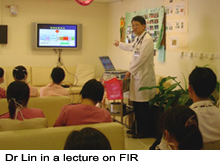 Abstract: Abstract:
Vascular access malfunction, usually presenting with an inadequate access flow (Qa), is the leading cause of morbidity and hospitalization in hemodialysis (HD) patients. Many methods of thermal therapy have been tried for improving Qa but with limited effects. This randomized trial was designed to evaluate the effect of far-infrared (FIR) therapy on access flow and patency of the native arteriovenous fistula (AVF). A total of 145 HD patients were enrolled with 73 in the control group and 72 in the FIR group. A WS TY101 FIR emitter was used for 40 min, and hemodynamic parameters were measured by the Transonic HD02 monitor during HD. The Qa1/Qa2 and Qa3/Qa4 were defined as the Qa measured at the beginning/at 40 min later in the HD session before the initiation and at the end of the study, respectively. The incremental change of Qa in the single HD session with FIR therapy was significantly higher than that without FIR therapy (13.2 ± 114.7 versus - 33.4 ± 132.3 ml/min; P = 0.021). In comparison with control subjects, patients who received FIR therapy for 1 yr had ( 1 ) a lower incidence (12.5 versus 30.1%; P < 0.01) and relative incidence (one episode per 67.7 versus one episode per 26.7 patient-months; P = 0.03) of AVF malfunction; ( 2 ) higher values of the following parameters, including ? (Qa4 - Qa3) (36.2 ± 82.4 versus - 12.7 ± 153.6 ml/min; P = 0.027), ? (Qa3 - Qa1) (36.3 ± 166.2 versus - 51.7 ± 283.1 ml/min; P = 0.035), ? (Qa4 - Qa2) (99.2 ± 144.4 versus - 47.5 ± 244.5 ml/min; P < 0.001), and ? (Qa4 - Qa2) - ? (Qa3 - Qa1) (62.9 ± 111.6 versus 4.1 ± 184.5 ml/min; P = 0.032); and ( 3 ) a better unassisted patency of AVF (85.9 versus 67.6%; P < 0.01).
In conclusion, FIR therapy, a noninvasive and convenient therapeutic modality, can improve Qa and survival of the AVF in HD patients through both its thermal and its nonthermal effects. |
|
| |
| 2. |
Far Infrared Therapy Inhibits Vascular Endothelial Inflammation via the Induction of Heme Oxygenase-1 |
( Arteriosclerosis, Thrombosis, Vascular Biology. 2008; 28:739-745) |
Chih-Ching Lin, Xiao-Ming Liu, Kelly Peyton, Hong Wang, Wu-Chang Yang, Shing-Jong Lin, William Durante
|
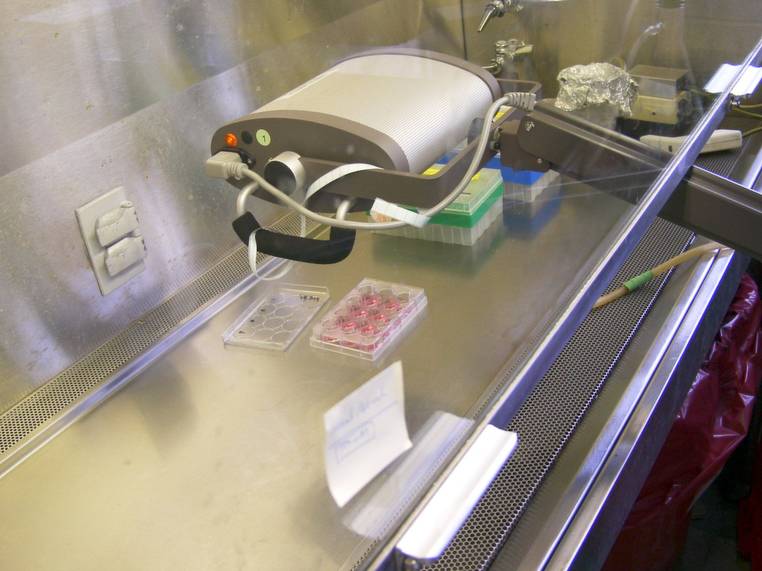 Objective: Objective:
Survival of arteriovenous fistulas (AVFs) in hemodialysis patients is associated with both far infrared (FIR) therapy and length polymorphisms of the heme oxygenase-1 (HO-1) promoter. In this study, we evaluated whether there is an interaction between FIR radiation and HO-1 in regulating vascular inflammation.
Methods and Results:
Treatment of cultured human umbilical vein endothelial cells (ECs) with FIR radiation stimulated HO-1 protein, mRNA, and promoter activity. HO-1 induction was dependent on the activation of the antioxidant responsive element/NF-E2-related factor-2 complex, and was likely a consequence of heat stress. FIR radiation also inhibited tumor necrosis factor (TNF)-_–mediated expression of E-selectin, vascular cell adhesion molecule-1, intercellular cell adhesion molecule-1, monocyte chemoattractant protein-1, interleukin-8, and the cytokine-mediated adhesion of monocytes to ECs. The antiinflammatory action of FIR was mimicked by bilirubin, and was reversed by the HO inhibitor, tin protoporphyrin-IX, or by the selective knockdown of HO-1. Finally, the antiinflammatory effect of FIR was also observed in patients undergoing hemodialysis. Conclusions:
These results demonstrate that FIR therapy exerts a potent antiinflammatory effect via the induction of HO-1. The ability of FIR therapy to inhibit inflammation may play a critical role in preserving blood flow and patency of AVFs in hemodialysis patients. |
|
| |
| 3. |
The Interactive Effect between Length Polymorphism of Heme Oxygenase-1 Gene and Far Infrared Therapy on Access Flow and Unassisted Patency of AV Fistula in HD Patients |
(Poster of Annual meeting of ASN 2008) |
Chih-Ching Lin 1,2 , Wu-Chang Yang 1,2
1 School of Medicine, National Yang Ming University, Taipei, Taiwan; 2 Division of Nephrology, Department of Medicine, Taipei Veterans General Hospital, Taipei, Taiwan |
Background: A longer length polymorphism with GT repeat number [(GT)n] <30 in the heme oxygenase-1 (HO-1) gene and far infrared therapy (FIR) were associated with better prognosis of arteriovenous fistula (AVF) in hemodialysis (HD) patients.
Purpose:
To determine the interaction between HO-1 genotype polymorphism and FIR therapy on access flow (Qa) and patency of AVF in HD patients.
Methods:
HD patients were randomized into the control group and the FIR group who received 40 minutes of FIR therapy. Hemodynamic parameters were measured by the Transonic HD 02 monitor during HD. The Qa1/Qa2 and Qa3/Qa4 were defined as the Qa measured at the beginning/ at 40 minutes later in the HD session prior to the initiation and at the end of the study respectively. Length polymorphisms of (GT) n in the promoter region were measured by PCR. L allele means [(GT) n ] ? 30 and S allele means [(GT)n] <30.
Results:
Totally 127 patients finished the study. The patient numbers with/ without FIR therapy were 14/15 in S/S group, 32/31 in S/L group, and 18/17 in L/L group. The following ? Qa were highest in S/S group, lower in L/S group, and lowest in L/L group, including (1) ? Qa3 [1100 ± 454 vs. 988 ± 390 vs. 851 ± 376 ml/min; P <0.05], (2) Qa4 [1120 ± 489 vs. 1007 ± 414 vs. 843 ± 368ml/min; P <0.05], (3) ? (Qa3-Qa1) [20 ± 183 vs. 10 ± 137 vs. -62 ± 158 ml/min; P <0.05], and (4) ? (Qa4-Qa2) [61 ± 162 vs. 42 ± 165 vs. -34 ± 128 ml/min; P <0.05]. In comparison with controls, HD patients receiving FIR therapy for a year had higher incremental values of (1) ? (Qa3-Qa1) in the group of S/S genotype [98 ± 202 vs. -64 ± 118 ml/min; P <0.05], and (2) ? (Qa4-Qa2) in all of the three groups ( P < 0.02). The incidence of AVF malfunction was decreased by FIR therapy in all of the three groups of different genotypes: from 28.6% to 0% in S/S group, from 21.9% to 12.9% in L/S group, and from 38.9% to 23.5% in L/L group.
Conclusions:
FIR therapy can improve the function of AVF in HD patients, with the best protective effect in those with S/S genotype of HO-1. |
|
| |
| 4. |
| Far-Infrared Mitigates Vascular Endothelial Growth Factor-Induced Proliferation in Human Umbilical Vein Endothelial Cells Via the Generation of Nitric Oxide and Reactive Oxygen Species |
(Poster of Annual meeting of ASN 2008) |
Yung-Ho Hsu, Tso-Hsiao Chen, Chun-Cheng Hou, Yuh-Mou Sue, Cheng-Hsien Chen
Department of Internal Medicine, Taipei Medical University-Wan Fang Hospital, Taipei, Taiwan; Graduate Institute of Clinical Medicine, Taipei Medical University, Taipei, Taiwan |
Vascular access dysfunction causes enormous clinical morbidity in hemodialysis patients. Venous stenosis as a result of neointimal hyperplasia is the major cause of it. Far-infrared (FIR) therapy has been reported recently as a competent therapeutic modality in improving access flow and patency of the arteriovenous fistula. But the exact mechanism remains to be determined. The present study aims to evaluate the influence of FIR on vascular endothelial growth factor (VEGF)-induced proliferation of human umbilical vein endothelial cells (HUVEC) and examine the mechanisms. VEGF-induced proliferation of HUVEC was significantly reduced by FIR at 20 mili watt (mw)/cm2 for 30min in comparison with those without FIR radiation. The VEGF-induced phosphorylation of extracellular signal-regulated kinases 1/2 (ERK1/2) in HUVEC was also inhibited by FIR. These effects were not obvious by the thermal effect in HUVEC alone from 37.5 to 38oC, as the FIR treatment increased the cultured medium temperature approximately 0.5 ? . We found FIR treatment induced the phosphorylation of endothelial nitric oxide synthase (eNOS) and increased nitric oxide (NO) in HUVEC. The NOS inhibitor N G -nitro-l-arginine methylester (L-NAME) abolished the inhibitory effects of FIR on cell proliferation and the phosphorylation of ERK1/2. FIR also induced reactive oxygen species (ROS) generation in HUVEC. The NADH oxidase inhibitors and ROS scavengers blocked the inhibitory effect of FIR on cell proliferation, and significantly reduced FIR-induced eNOS phosphorylation. We also found that Src homology 2- containing tyrosine phosphatase (SHP-2) was associated with phospho-eNOS and transiently oxidized to inhibit the dephosphorylation of phosphor-eNOS during FIR treatment. These data suggest that FIR, through its nonthermal effects, induces NO and ROS generation to mitigate VEGF-induced proliferation in HUVEC. |
|
| |
| 5. |
Physical Examination of Limb Vessels for Native Arteriovenous Shunt Construction under Low-Density Far Infrared-ray Irradiation over Hands |
Jih-Chung Chiang Hung-Sheng Wu * Ming-He Huang *
Department of Cardiovascular Surgery Show Chwan Memorial Hospital |
Purpose:
To control quality of native arteriovenous (AV) shunt construction over upper limbs for long term hemodialysis (HD)
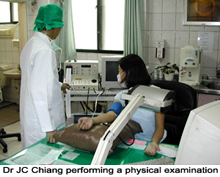 Background: Since 1966 Dr. Brescia Cimino et al created AV shunt on the forearm for long term HD, native AV shunt becomes gold standard access for HD due to its longevity and less complication. Physiologically, limb vessels have important function in heat dissipation, so it may be helpful to dilate the vessels with far infrared-ray (FIR) irradiation during physical examination. Background: Since 1966 Dr. Brescia Cimino et al created AV shunt on the forearm for long term HD, native AV shunt becomes gold standard access for HD due to its longevity and less complication. Physiologically, limb vessels have important function in heat dissipation, so it may be helpful to dilate the vessels with far infrared-ray (FIR) irradiation during physical examination.
Materials and methods: Since June 2001, all patients suffered from end stage renal disease need AV shunt construction or revisions were enrolled in this study. A low-density far-infrared emitter with wavelength of 3-25 μm was used to irradiate both hands during history taking and physical examination. Irradiation duration ranged from 5 minutes to about 20 minutes. Palpation of pulsation of brachial, radial and ulnar arteries and Allen test was done to rule out severe atherosclerotic occlusion of the artery. Palpation of the vein to make sure of its size (about 3 mm) and elasticity was suitable for shunt construction. During operation the inner lumen size of the vein selected for shunt construction was measured with vessel dilators. Temperature of the hand skin is not elevated above 34℃. If severe dehydration of the patient is impressed, oral intake of 100-200 ml warm water was institute immediately. Then, the irradiation procedure was repeated. In case of failing AV shunt, degree of thrill before irradiation was compared with during irradiation to differentiate fixed stenosis with temporarily spastic stenosis of the shunt vessels.
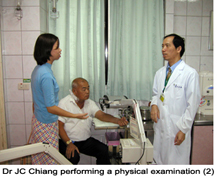 Results: Results:
More then 5000-access operations‘ decision-makings we had been made in five years. About one third of the operation procedures were native AV shunt construction, the vein size was almost same as that measured physically before operation. More then 50 patient’s original native AV shunts were rescued with FIR irradiation without shunt revision. At least 10 more patients had experience of repeated graft bridged AV shunt failure were changed to native AV shunt. And 5 primarily constructed shunts were needled to delivery HD in one week.
Conclusion:
Physical examination of limb vessels for native arteriovenous shunt construction under low-density far infrared-ray irradiation over hands does improve decision-making quality of access operation.
|
|
| |
| 6. |
The Effects of Repeated Far Infrared Ray Therapy in Patients with Chronic Prostatitis
|
(Poster of Annual meeting of Taiwan Urological Association 2006) |
Yuan-Po Tu , Chau-Fong Chen , Shyh-Chyan Chen , MT Chen
Department of Urology, Shu-Tein Hospital, Dept. of Physiology, College of Medicine, National Taiwan University., Department of Urology, National Taiwan University Hospital |
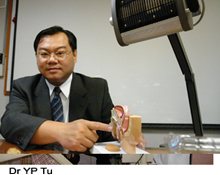 Purpose: Purpose:
The aim of our study was sought to investigate whether Far Infrared Ray Therapy gain the effects in ameliorating symptoms for patients with chronic prostatitis in clinical practice.
Materials and Methods:
12 patients with the primary symptoms including perineal, lower abdominal, testicular, penile and ejaculatory pain, which lasting more than 3 months, were enrolled. These patients had been received several kinds of medical therapy but in vain. In this study, they were treated daily with an experimental far infrared-ray dry sauna therapy for 40 min at 39°C. The therapy was performed once a day, for a total of 8 sessions. After two weeks sauna therapy, these subjects were analyzed the effects in ameliorating symptoms of CP with the result of EPS, the accumulated score of IPSS and pain score.
Results:
There was significant difference in the result of IPSS score, pain score and EPS exam., compared at the initial and final time between the two weeks Far Infrared-Ray dry sauna therapy for CP patients. The data revealed the IPSS score, 19.2±4.8 to 4.0±2.4; the pain score, 7.3±1.5 to 2.0±1.8; and the EPS WBC count 83.3% < 10/HPF.
Conclusions:
In our preliminary study, the repeated Far Infrared-Ray therapy improves symptoms for patients with chronic prostatitis in clinical practice. |
|
| |
| 7. |
Clinical Experience in Application of Far-infrared in Critical Limb Ischemia
|
Jiunnjye Sheu, Fan-Yen Lee
Department of Cardiovascular Surgery, Chang Gung Memorial Hospital, Kaohsiung |
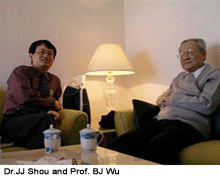 Purpose: Purpose:
Here we presented our experience in clinical application of far infrared in critical limb ischemia..
Materials and Methods:
From May 2005, we began to use far infrared as combined therapy in the patients with critical limb ischemia. There are 3 upper limb ischemia, and 56 lower limb ischemia. Fifty five patients received (two upper limb ischemia and 53 lower limb ischemia) bypass operation, and 3 patients received far infrared therapy only.
Results:
In the upper limb ischemia group, limb salvage is 100%, and in the lower limb ischemia group, limb salvage rate is 91%.
Conclusion:
Although the definite mechanism of the far infrared in not clear now, we think that it has positive effect in treatment of critical limb ischemia. |
|
| |
| 8. |
Biological Effect of Far-Infrared Therapy on Increasing Skin Microcirculation in Rats
|
( Photodermatol Photoimmunol Photomed 2006; 22: 78–86)
Shi- Yau Yu, Jen- Hwey Chiu, Shiaw-Der Yang, Yu-Chen Hsu, Wing- Yiu Lui , Chew- Wun Wu |
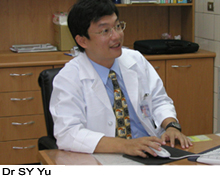
Background/purpose:
Insufficient microcirculation of skin leads to acute and chronic tissue ischemia in cases of trauma, reconstructive surgery, diabetes mellitus and peripheral arterial occlusive disease. The autonomic nervous system and nitric oxide (NO) play important roles in maintaining blood perfusion of the skin. Far-infrared (FIR) therapy provides low energy of light emitted from an artificial radiator and has been used to treat many vascular-related disorders. Nevertheless, the mechanisms through which FIR works remain unclear. The present study aims to test the hypothesis that the effect of FIR is through increasing skin microcirculation by a mechanism other than its thermal effect.
Methods:
Sixty rats were used in the present study. A WS TY301 FIR emitter was placed 20 cm above the rats. Skin temperature and blood flow were continuously measured by a K-type thermocouple. Under laboratory control, the abdominal skin temperature steadily increased from 38–39 1C, and was kept at constant temperature. Skin microcirculation was measured with a continuous laser Doppler flowmeter .
Results:
There was no significant change of skin blood flow during FIR treatment. Skin blood flow increased significantly soon after the removal of the FIR emitter. The stimulating effect on skin blood flow was more significant in the rats treated with FIR for 45 min and could be sustained as long as 60 min. These findings suggested a non- thermic biological effect of FIR on skin microcirculation. The promotive effect of FIR on increasing skin blood flow was not influenced by pretreatment of APP (atropine, propranolol and phentolamine ), but was suppressed by pretreatment with NG-nitro-L- arginine methyl ester (an endothelial nitric oxide synthase inhibitor).
Conclusion:
In conclusion, FIR therapy exerts a NO-related biological effect to increase skin microcirculation in rats. This might bring into perspective the clinical application of FIR to treat ischemic disease by augmenting L- arginine /NO pathway. |
|
| |
|
| |
|
|
 |
|
 |
|







